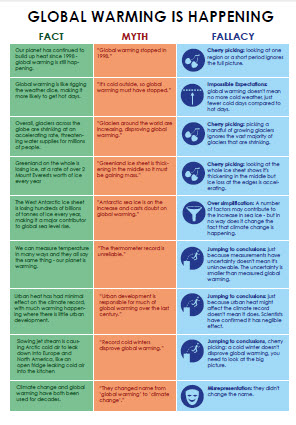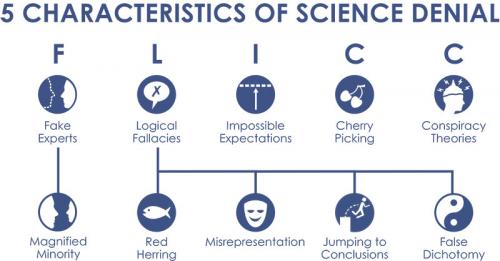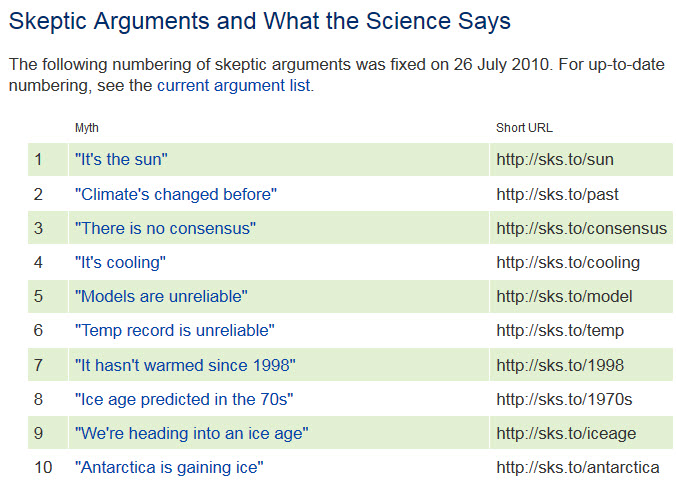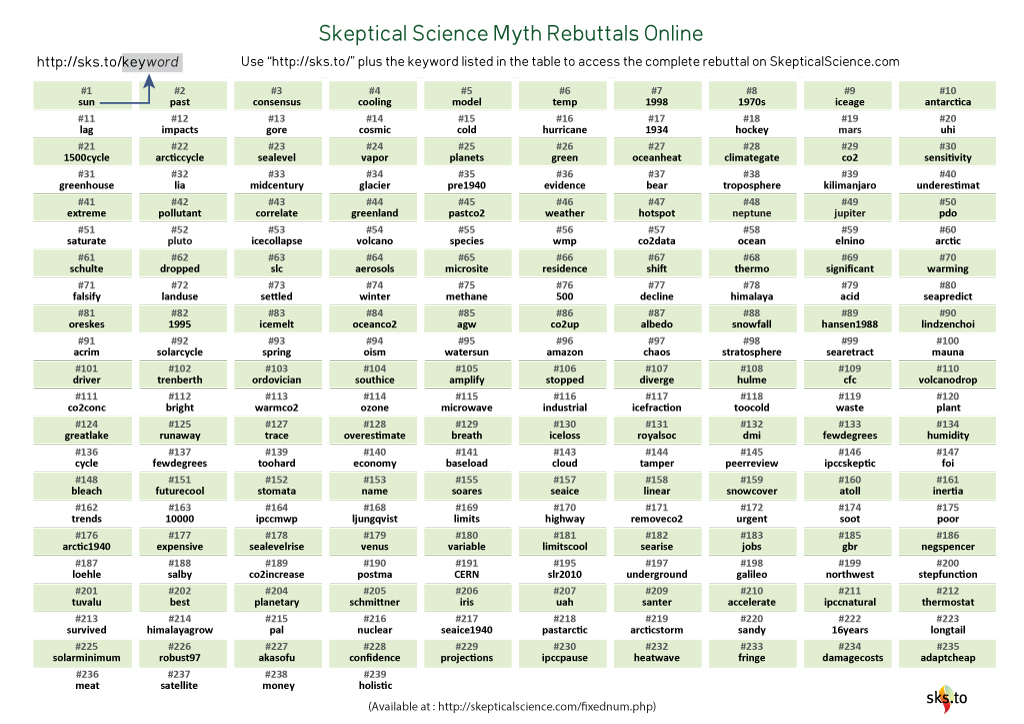Handy resources when facing a firehose of falsehoods
Chances are high that you will have come across somebody somewhere on the internet who still doesn't accept the overwhelming scientific consensus on human-caused global warming. That somebody may well have used a veritable firehose of falsehoods - usually referred to as a gish-gallop - where a big list of myths is fired off in quick succession. Creating such a gish-gallop is quick & easy and the urge to try and debunk all the misinformation it contains is often quite strong, but it's also a very time-consuming task to undertake. One time-saving option to tackle it, is to just concentrate on the most egregious instances of misinformation as examples of how the writer tries to mislead his readers and to ignore the rest. But, this has the disadvantage that others might accuse you of cherry-picking what you chose to debunk.
So, what other options do you have to fairly quickly dispense with such a firehose of falsehoods?
Option #1 - The Fact-Myth-Fallacy overview
Our MOOC Denial101x debunked around 50 of the most often heard myths related to climate science using the recipe to start out with the fact, followed by a short mention of the myth (with a warning!) and finishing off with explaining the fallacy employed. A condensed version of these debunkings is available as a four-page-PDF which you can download from here:
 The fallacies are based on the five techniques used by science deniers to distort facts: fake experts, logical fallacies, impossible expectations, cherry picking evidence, and conspiracy theories. The acronym FLICC is an easy way to remember these techniques.
The fallacies are based on the five techniques used by science deniers to distort facts: fake experts, logical fallacies, impossible expectations, cherry picking evidence, and conspiracy theories. The acronym FLICC is an easy way to remember these techniques.

FLICC: Fake experts, Logical fallacies, Impossible expectations, Cherry picking, Conspiracy theories. John Cook
So, if all - or at least most - of the myths spread in the gish-gallop are listed in the fact-myth-fallacy document, you can use these condensed rebuttals for a fairly quick debunking via copying and pasting the relevant entries.
Option #2 - Referring to the fixed numbers for the rebuttals
The misinformation put forth in a typical gish-gallop usually isn't anything new under the sun and will have been repeatedly debunked already. You should therefore find it in our list of rebuttals by their fixed numbers:

For a quick debunking, just list the myths encountered by their respective number and provide the link to the list for easy reference. For a real-life example of how to employ this, check out John Mashey's review of Murry Salby's "Physics of the Atmosphere and Climate" on Amazon. Alternatively, you can also provide the fixed number together with the short URL on sites where URLs are readily accepted.
Option #3 - Play a round of "Myth Bingo"!
This could turn out to be the option with the highest fun-factor - at least for you and others playing along. After familiarising yourself at least a bit with our fixed-numbers list and the rebuttals behind it, download and print the "Myth Bingo" chart listing all the fixed-numbers and the related keywords:

Myth-Rebuttal Chart - aka "Myth Bingo" - created by jg
You can then take this with you if you for example attend a talk by a known contrarian to quickly mark the myths mentioned for later reference. Or, it can come in handy when trying to take apart a gish-gallop in the form of a YouTube video or complete film like "Swindle". Another option could be to print out copies of the matrix and hand them out to attendees asking them to just tick the myths encountered.
Please use the comments to share more ideas of where and how these resources can be used!
Note about translations:
The Fact-Myth-Fallacy quick reference is also available in German.
If you'd like to translate it into another language, please contact us by selecting "Enquiry about translations" from the contact form's dropdown menu. We'll then get in touch with additional information.
Posted by BaerbelW on Tuesday, 3 May, 2016
 The fallacies are based on the five techniques used by science deniers to distort facts: fake experts, logical fallacies, impossible expectations, cherry picking evidence, and conspiracy theories. The acronym FLICC is an easy way to remember these techniques.
The fallacies are based on the five techniques used by science deniers to distort facts: fake experts, logical fallacies, impossible expectations, cherry picking evidence, and conspiracy theories. The acronym FLICC is an easy way to remember these techniques.



